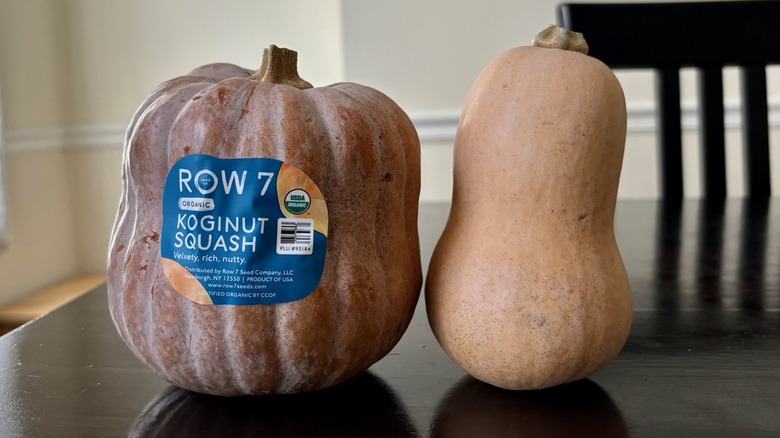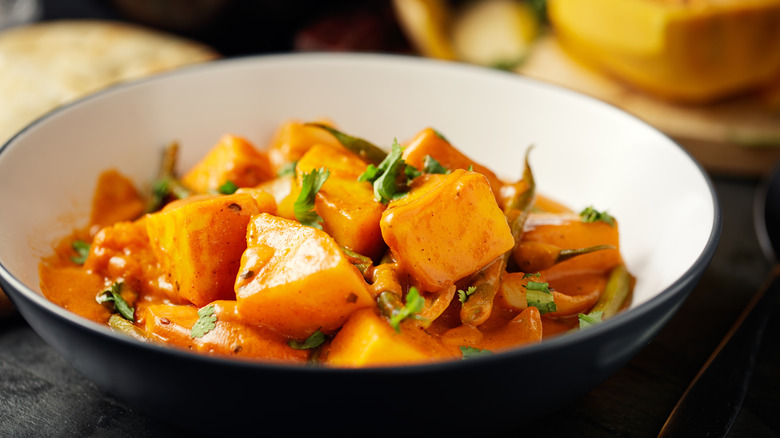Give Your Favorite Fall Dishes A New Twist With 2 Lesser Known Squash Varieties
If you are the kind of shopper who loves browsing the produce aisle for new-to-you varieties of fruits and vegetables (we see you, Del Monte pink pineapple), get ready to shake up your favorite cozy fall and winter recipes with two winter squash varieties you may not have seen before, but were literally created to boost the flavor of your cooking. There are plenty of different popular types of squash, though butternut often becomes the default choice. The problem is, butternut squash can be watery, bitter, or bland, which drags down the whole recipe. And those are the exact issues Row 7 Seed Company targeted when developing the lesser known Honeypatch and Koginut squash varieties.
Row 7 Seed Company produces unique vegetables and seeds that are superior in flavor and texture to their more conventional counterparts through careful cross-pollination and plant breeding skills. And starting in mid-October of 2024, you can expect to find these two less common squash varieties at Whole Foods locations nationwide instead of just on the coasts. Sweet and creamy Honeypatch squash is sold two to three squash per package for around $5.99, while the squat, orangey-bronze, rich-flavored Koginut squash retails for around $2.49 per pound and is sold individually.
What are Honeypatch and Koginut squash and how do you use them?
Despite its petite size, Honeypatch squash has a more intense sweetness, deep orange color, and consistently silkier texture than the similar butternut squash. A Koginut squash, meanwhile, is a hybrid cross between butternut squash and the typically large, green-hued Kabocha squash. Koginut is custardy soft when cooked, and has a flavor that is both sweet and earthy. After knocking the stem off the top of a Koginut with something firm, like the blunt end of a sturdy knife, half and seed the squash (save the seeds to roast if you like), and it's ready to cook in any number of ways. The thin skin is edible, similar to that of Delicata squash, so there is no need to peel it before cooking.
After it's been halved, you can roast it until it's tender in a large piece or cut it into chunks or wedges to be roasted, steamed, or sautéed. Try it in rich, spicy recipes like this kabocha squash curry, or keep it simple and season plain wedges like you do in this easy baked acorn squash recipe. The skin on a Honeypatch squash is edible, but is a little thicker than that of the Koginut. If you're roasting bite-size cubes, such as you'd do for this sausage and butternut squash pasta, peel the Honeypatch before cutting. You can also roast split, seeded halves and then scoop out the soft interior, leaving the skin behind. The squash is so tender that it makes the perfect base for a smooth squash soup or butternut squash mac and cheese recipe.

